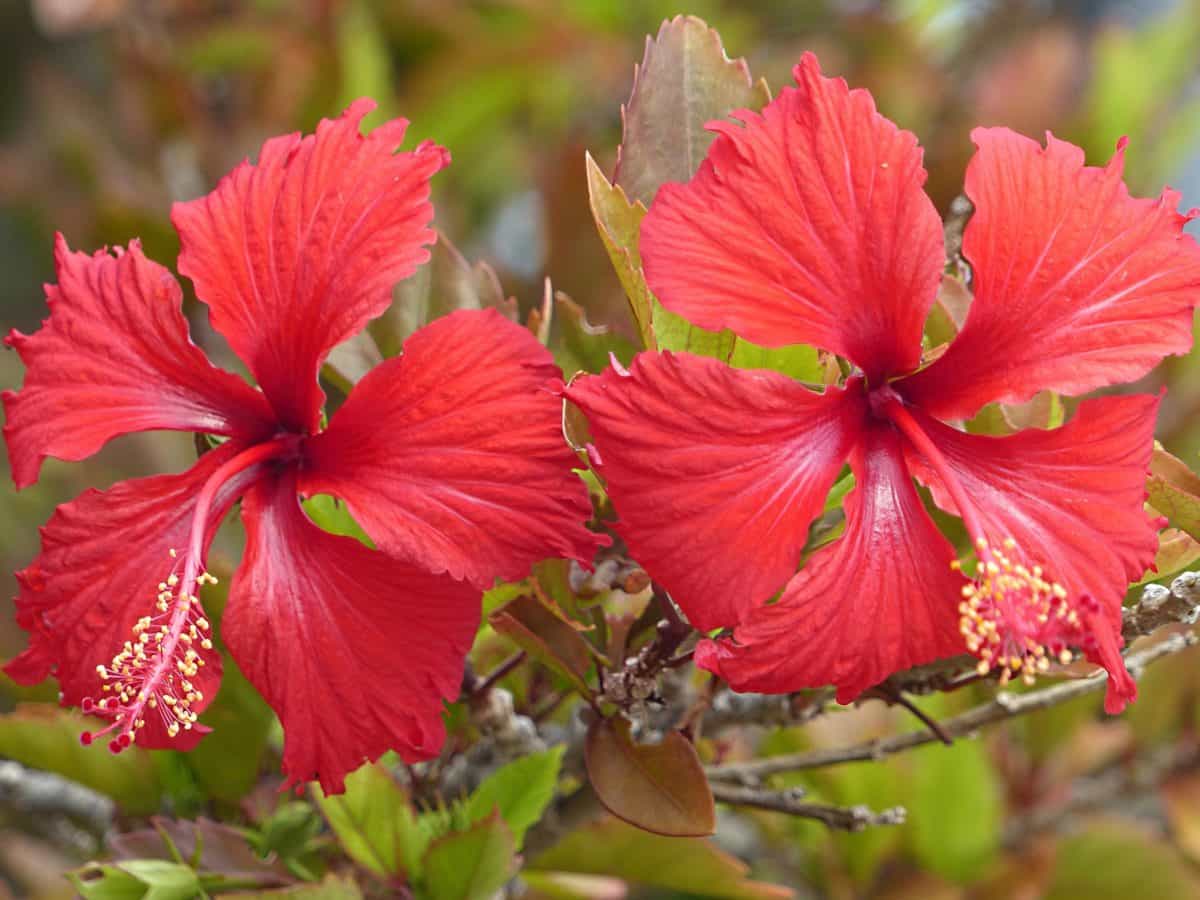
I love hibiscus. Although they are plants that do not tolerate the cold too much, their flowers are so brightly colored that it is difficult to ignore their beauty, not to mention that they are usually sold at really cheap prices, taking into account the size of the plants and how easy it is to maintain them.
In gardens and terraces that enjoy warm climates, without or very weak frosts, they look spectacular as hedges, isolated specimens, and in groups. But, you may be very used to seeing one or two species. To change that a bit, We invite you to know eight types of Hibiscus.
Hibiscus brackenridgei
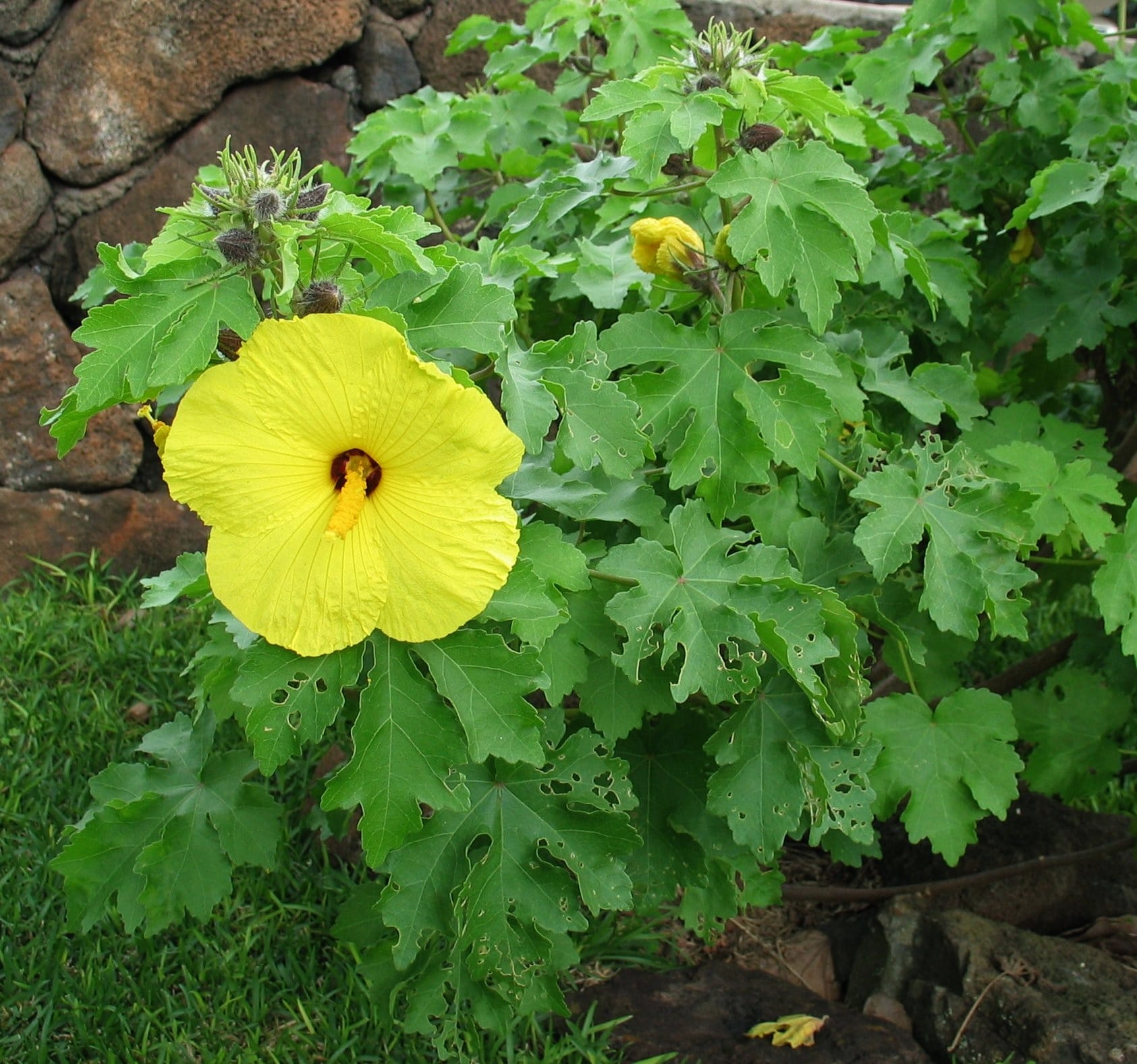
Image - Wikimedia / David Eickhoff from Pearl City, Hawaii, USA
El Hibiscus brackenridgei It is a small tree or tree native to Hawaii that can grow up to 10 meters. Its flowers are of a magnificent yellow color, and two varieties are distinguished:
- Hibiscus brackenridgei subsp. brackenridgei: it is a small tree or shrub that is found at heights between 120 and 790 meters above sea level, in the country's forests and bushes.
- Hibiscus brackenridgei subsp mokuleianus: is a tree that is only found on Kauai on the Hawaiian island Oahu. It is considered an endangered species by the USFWS (United States Fish and Wildlife Service, which translated into Spanish would be something like the US Fish and Wildlife Protection Service, the equivalent of the International Union for the Conservation of the Nature or IUCN that we have in Europe).
hibiscus cannabinus
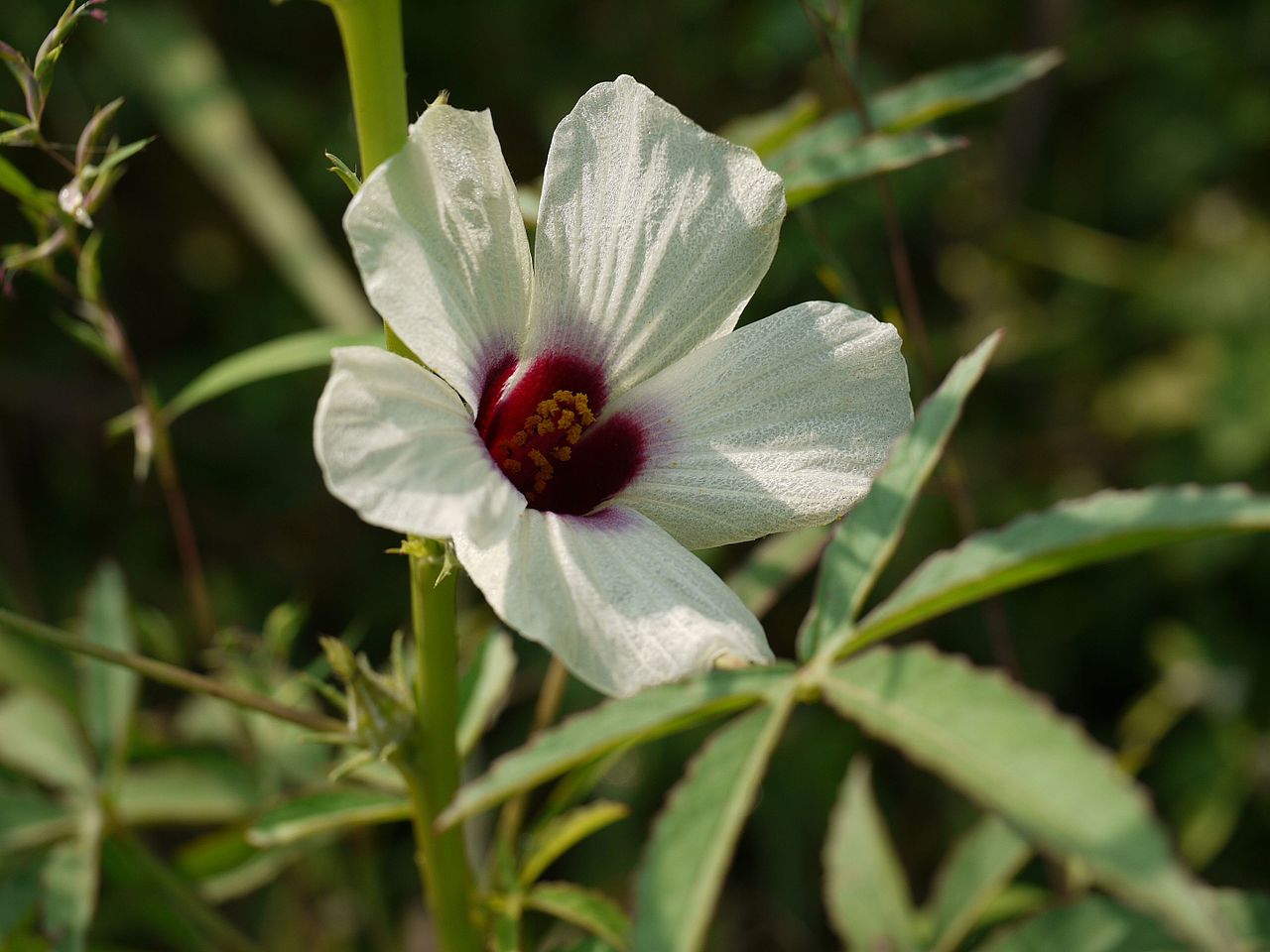
Image - Wikimedia / Dinesh Valke from Thane, India
El hibiscus cannabinus It is a plant with an annual or biennial cycle (that is, it lives one or two years) native to Africa and tropical Asia. It owes its surname to the fact that its leaves are very similar to those of the herbs of the Cannabis genus, but when it comes to stems and flowers they are very different. This species develops a stem with a woody base that can reach 3,5 meters in height, and its flowers are white, yellow or purple, with a diameter of between 8 and 15 centimeters.
If we talk about its uses, apart from being used as an ornamental, fibers are extracted from its stem with which paper is made. For this reason, it is very interesting as an alternative source for the paper industry, since due to its rapid growth and easy multiplication, if it were cultivated more surely it could contribute to protect the forests.
moscheut hibiscus
El moscheut hibiscus it is a perennial herb native to North America. It does not grow much, only between 1 and 2,5 meters high, so it is highly recommended for growing in pots and small gardens. Its stems are pubescent, that is, very short hairs sprout from them that give it a soft touch. Its flowers are large, between 10 and 14 centimeters in diameter, and are white, pink, red or purple, with a dark red center.
It is used in gardens and terraces for its ornamental value, but also for its seeds, from which an oil that is used in perfumery is extracted.
Hibiscus mutabilis
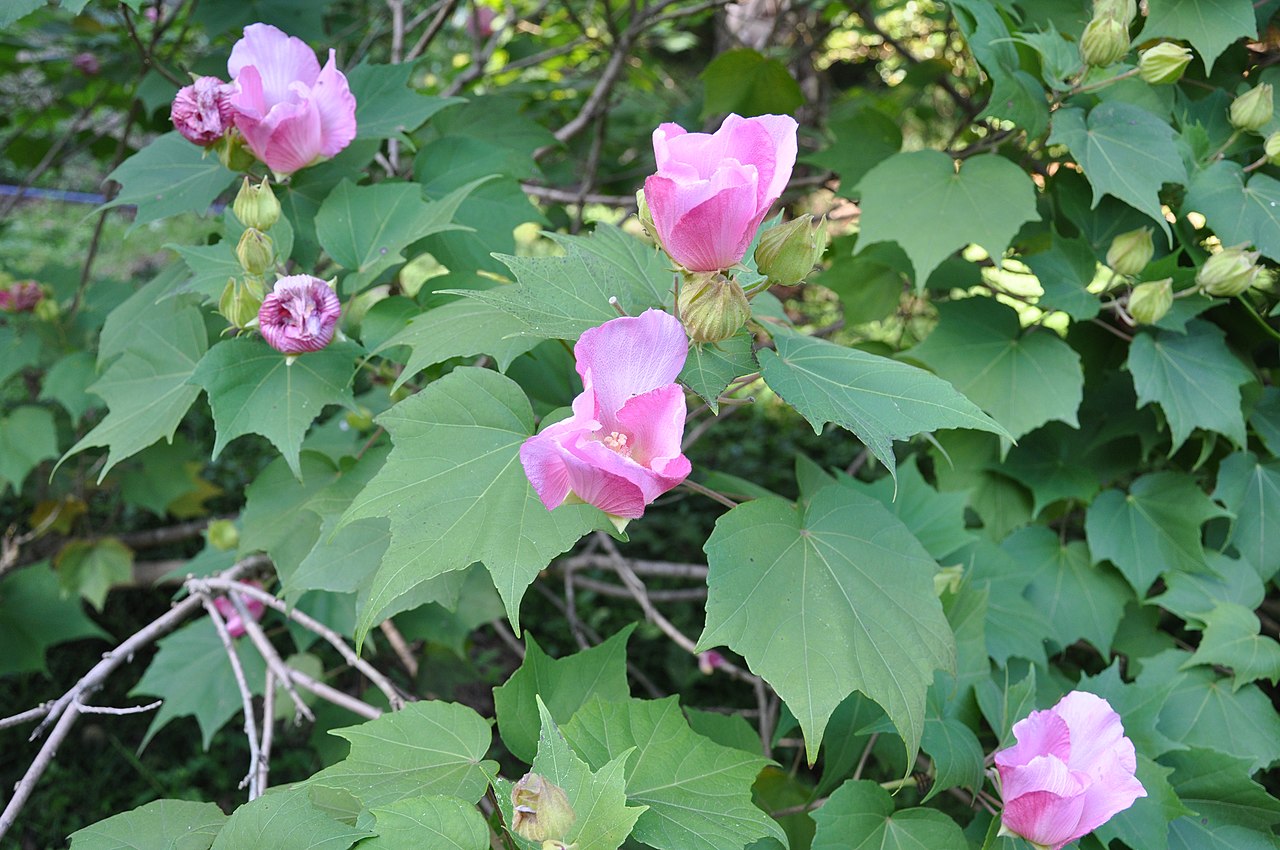
Image - Wikimedia / Lazaregagnidze
El Hibiscus mutabilis It is an evergreen shrub native to the southern United States that reaches a height of about 4 meters. It is known by the names May rose, Cuban rose mallow and love to use, and produces flowers with one or double crown of white or pink petals.
Hibiscus rosa-sinensis
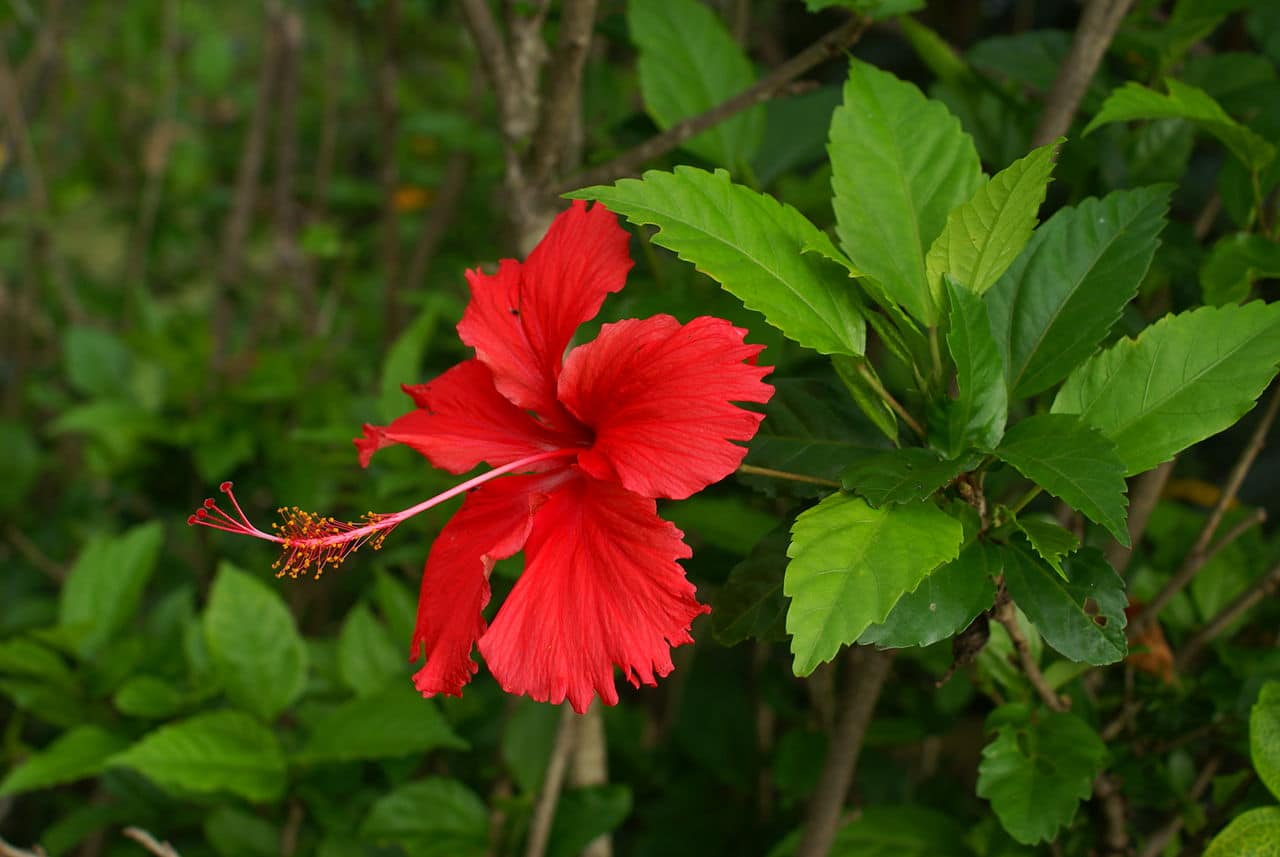
Image - Wikimedia / B.navez
El Hibiscus rosa sinensis it is the most popular species. We know it as a China rose, cayenne, poppy or simply hibiscus, and it is an evergreen shrub native to East Asia. It produces a large number of flowers between 6 and 12 centimeters in diameter, single or double, and of very different colors.: yellow, red, orange, pink, bicolor.
Very appreciated in the gardens of warm climates. In the Mediterranean region it is very popular as a hedge, but it also looks great as a pot plant. In addition, its tender leaves can be consumed in salads.
Hibiscus sabdariffa
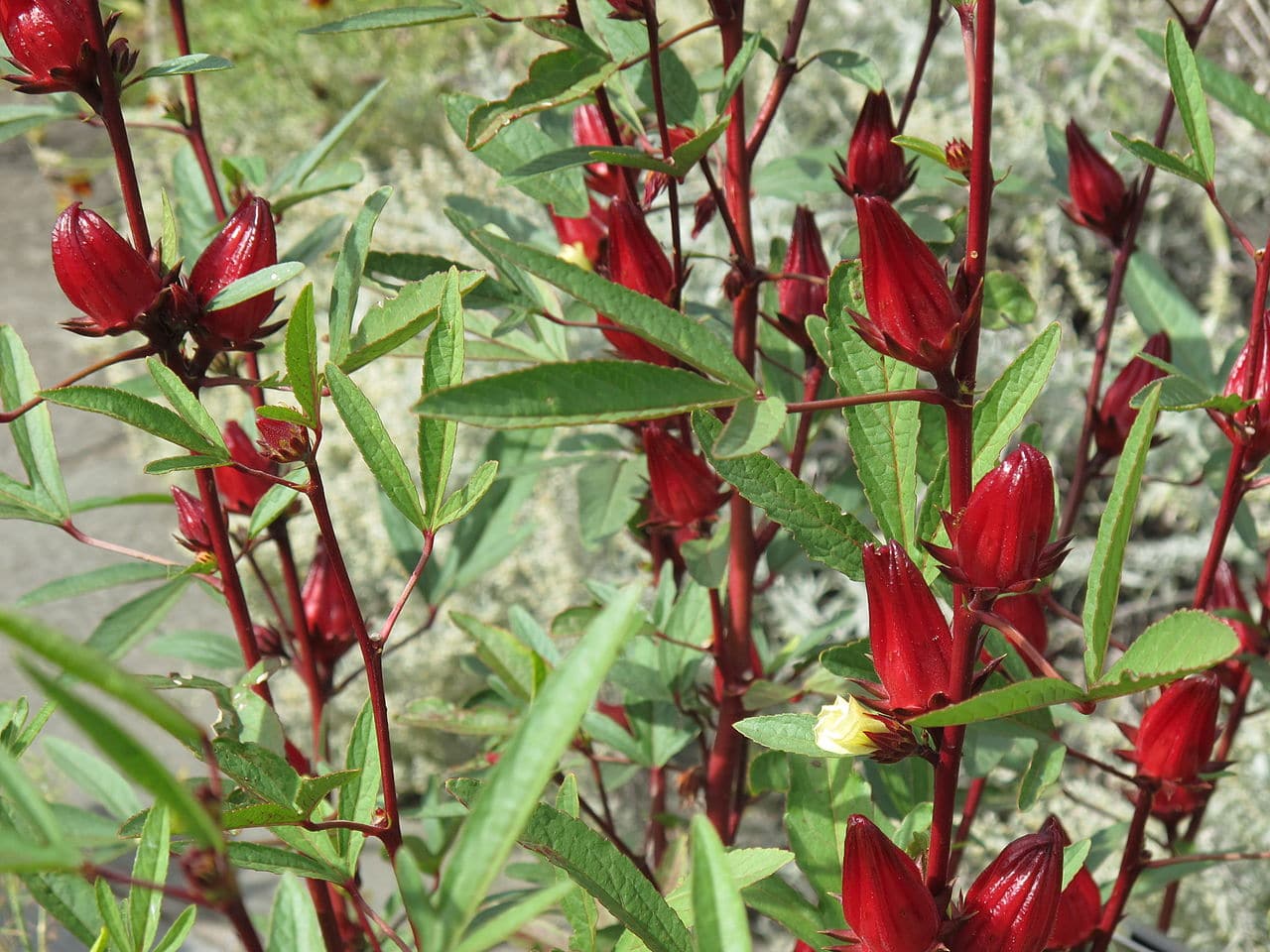
Image - Wikimedia / Invertzoo
El Hibiscus sabdariffa It is an annual herb known as Jamaica rose, Jamaica flower, saril, guinea pig sour, or guinea red sorrel. It is a native species of tropical Africa, and grows around 1 and 3 meters in height. The flowers are red at the base and somewhat paler towards the ends.They measure 8-10 centimeters in diameter, and have an intense red calyx.
If we talk about its uses, it is an ideal plant to have in pots or gardens. But without a doubt its most widespread use is edible. The calyces are harvested when they acquire their striking wine-red color, and are used as a colorant. Also, its green leaves can be eaten in salads.
hibiscus syriacus
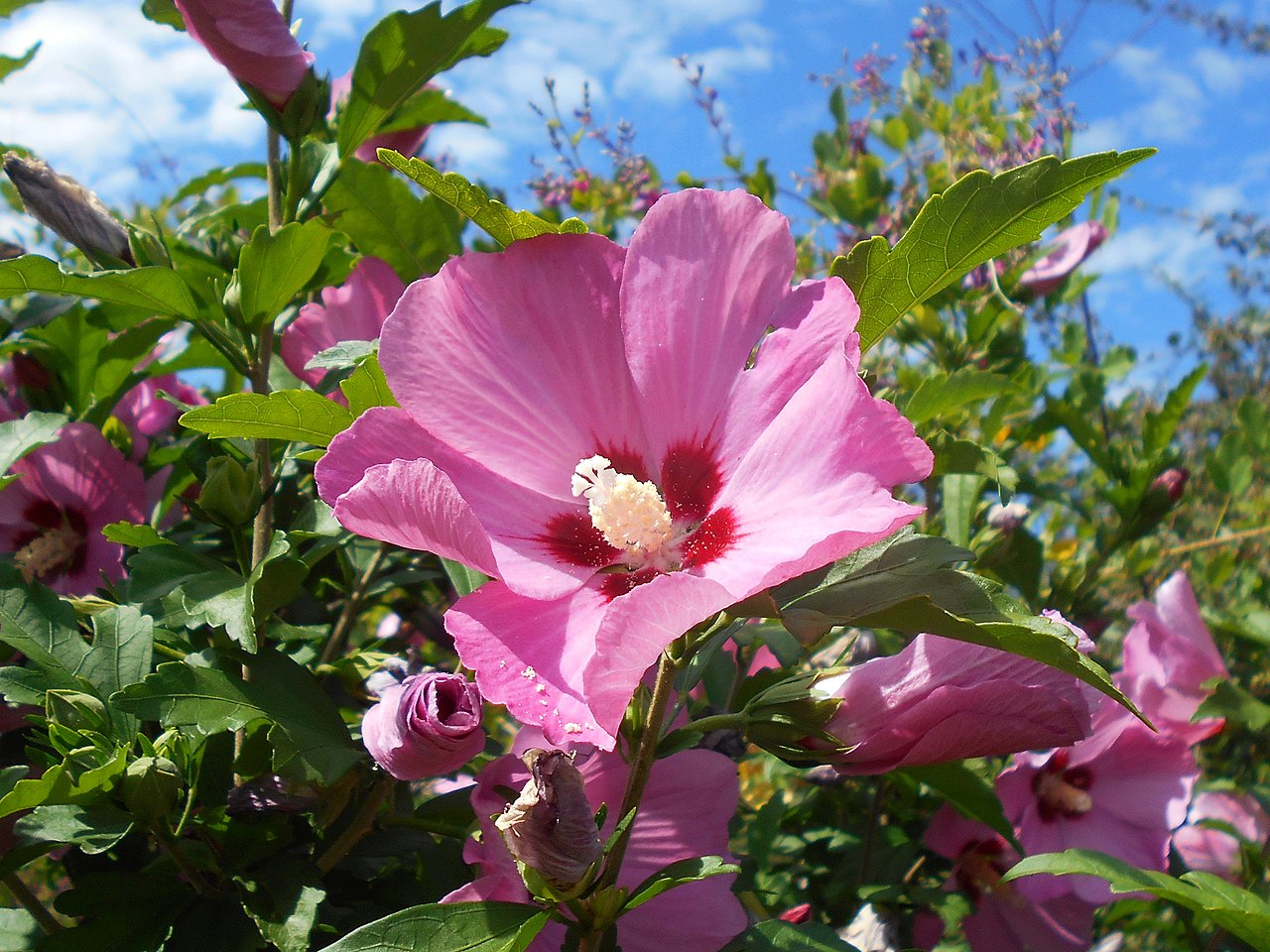
Image - Wikimedia / Salicyna
El hibiscus syriacus It is a shrub or deciduous tree known as rose of Syria, altea, or arboreal marshmallow. It reaches a height of 2 to 4 meters, and is native to Asia. Its flowers are white, pink, red or purple, and are about 7 centimeters in diameter.
It is a species especially recommended for temperate climates, since it supports weak frosts.
Hibiscus tiliaceus
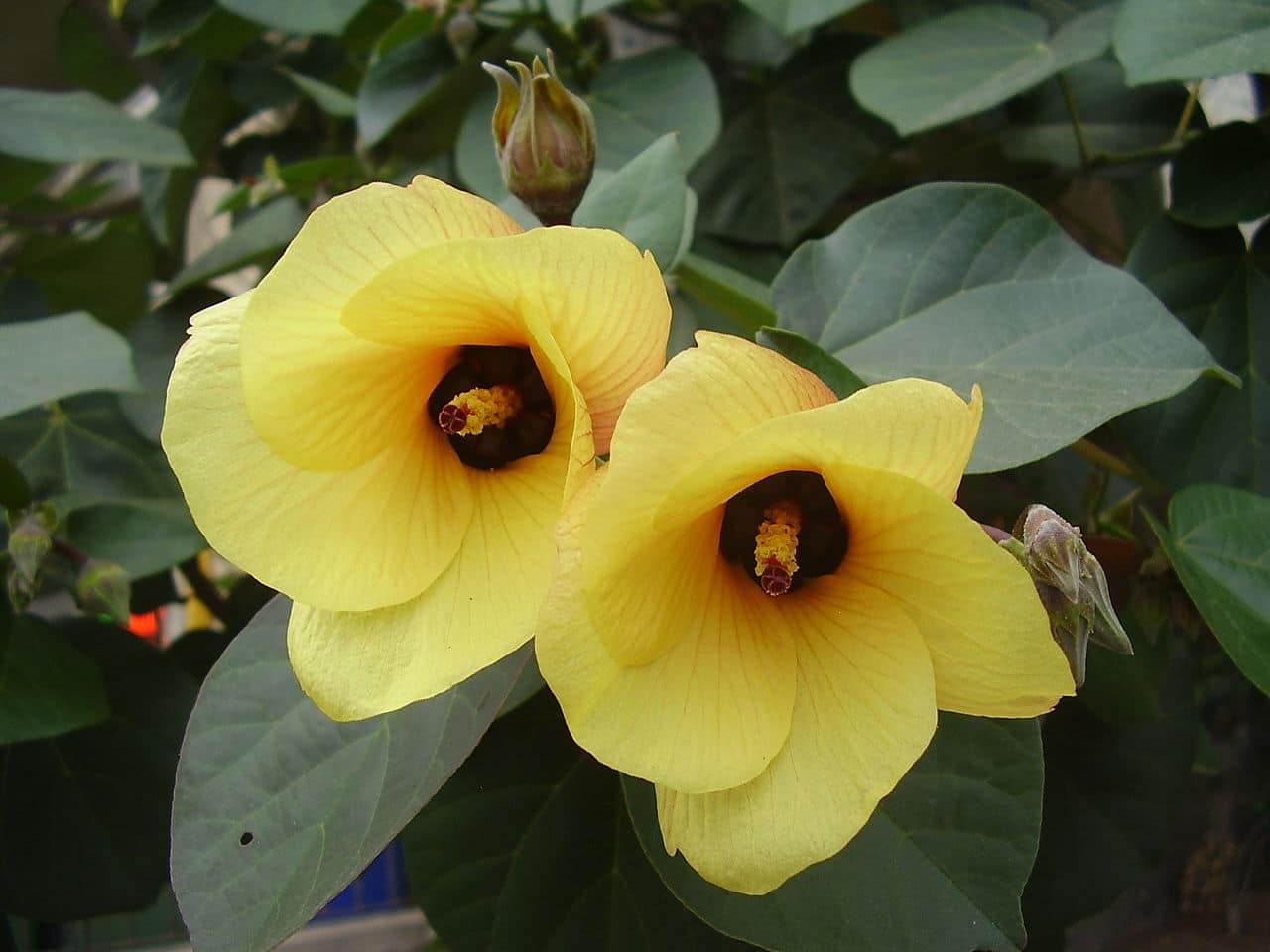
Image - Wikimedia / Dr. Avishai Teicher
El Hibiscus tiliaceus It is an evergreen tree known as the common majagua of Cuba that, however, originates from Australia and Southeast Asia. It grows around 4 to 10 meters in height, with a trunk diameter of about 15 centimeters. It produces yellow flowers with a dark red center.
Its most widespread use is ornamental, both in gardens and in bonsai. Its wood is also used to build canoes and even ropes. In addition, it must also be said that its young leaves can be eaten as a vegetable.
Which of these types of Hibiscus did you like the most? If you want to know what are the basic care of these plants, click here below:

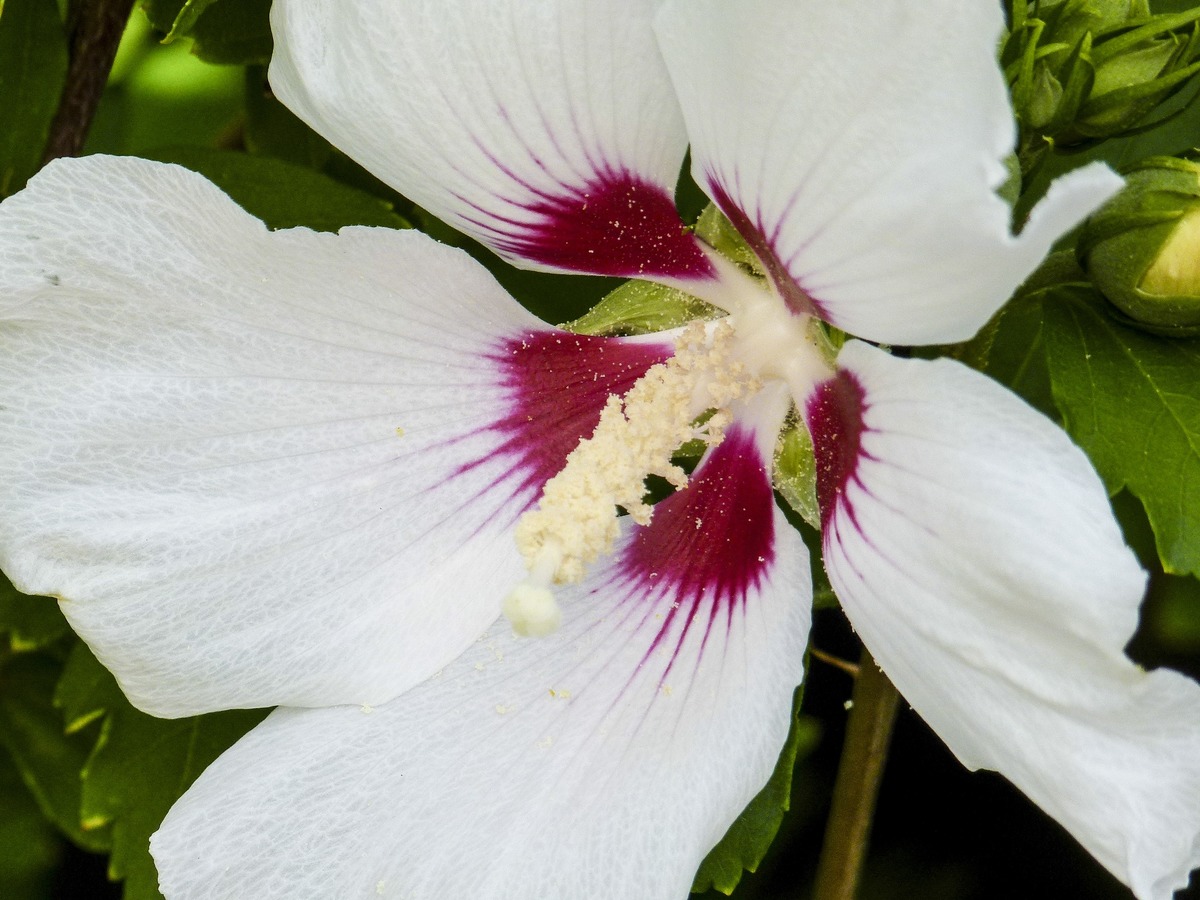
Excellent article!!!
Hi Rossana.
Thanks a lot. We are glad to know that our article has been of interest to you.
Regards!
Very good article, of course, didactic, congratulations and thanks for the shared information.
Thank you very much for your kind words, Cristian 🙂
Isabelobregon@att.net. I loved this article. I have it in my garden, but I didn't know you could make teas with them. My question is, can it be consumed with the different varieties of ibiscus? thank you very much regards
Hello isbael.
The truth is that I can't tell you. It is better that you ask in a herbalist.
A greeting.